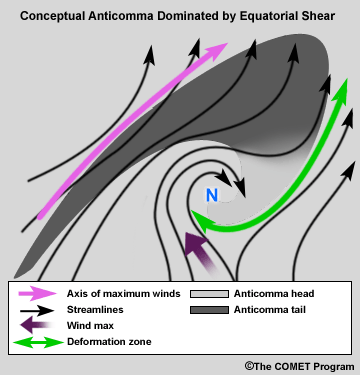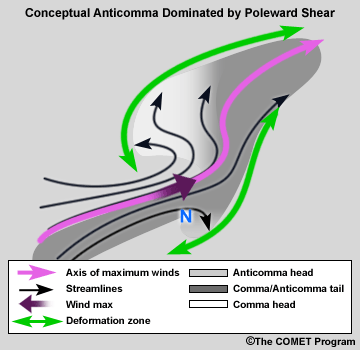Morphology of an Anticomma Pattern
Roger Weldon originally identified the "comma" cloud pattern in the early 1980's. The anticomma pattern is a mirror interpretation of that. Weldon showed correlations between the clouds, streamlines, and absolute vorticity isopleths. Note that absolute vorticity isopleths are used as an operational surrogate for system relative streamlines. Variation in cloud heights from 500-hPa and time differences between the analysis and the satellite data can lead to errors. The centre of cloud rotation, as identified by the point of inflection, is the vorticity minimum to a very close operational approximation.
Anticomma Dominated by Rotation and/or Equatorial Shear
The concave arc associated with the shear wind maximum defines this type of anticomma. The anticomma head is downstream from the vorticity minimum. Negative vorticity advection will be strongest in the anticomma head region.

Anticomma Dominated by Poleward Shear
The convex arc associated with the poleward wind maximum defines this type of anticomma. The concave arc region is minimal and the point of inflection is within the moisture area. The anticomma head is still downstream from the vorticity minimum.
